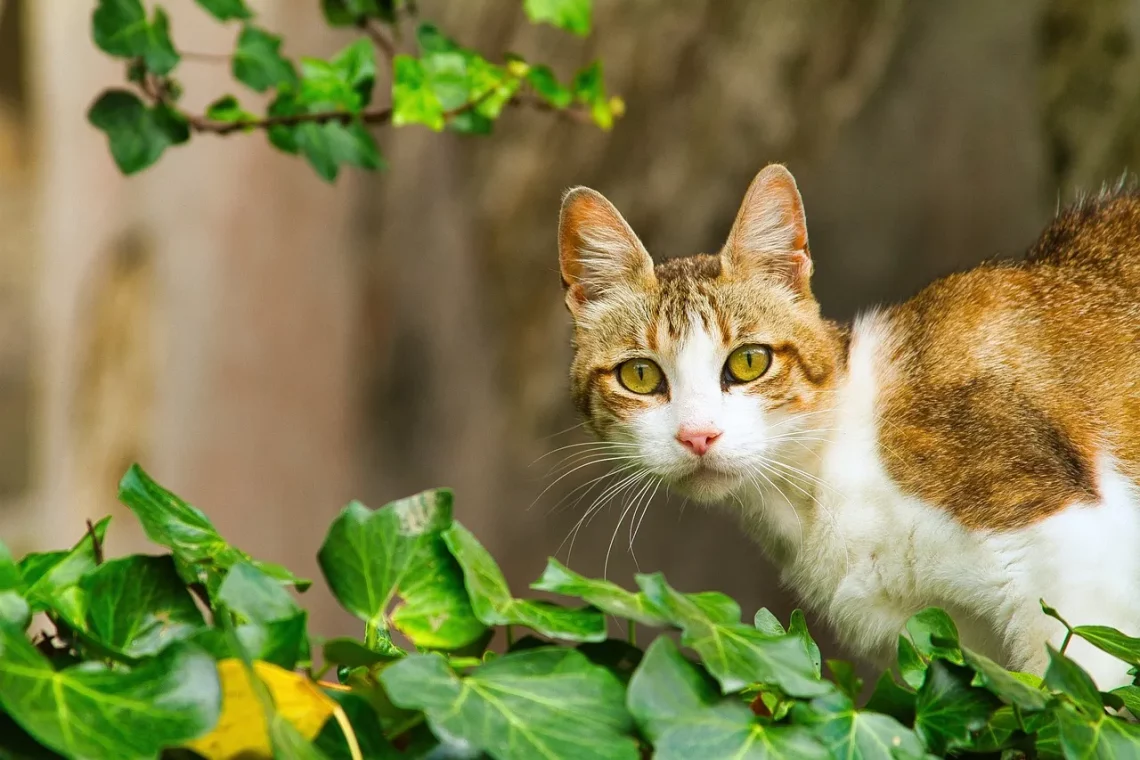
Essential Guide to Bengal Breeding: Tips for Success and Care
Breeding Bengal cats can be a rewarding and fulfilling endeavor for both experienced breeders and newcomers alike. These striking felines, known for their exotic appearance and playful personalities, have gained immense popularity in recent years. Their unique spotted coats and energetic demeanor make them a sought-after breed for cat lovers around the world. However, breeding Bengal cats requires a deep understanding of their genetics, proper care, and breeding protocols to ensure the health and well-being of both the kittens and the parent cats.
When considering Bengal breeding, it’s essential to carry out thorough research and preparation. The process involves much more than simply pairing two cats together; it includes understanding their lineage, ensuring genetic diversity, and being aware of potential health issues that can arise. Additionally, potential breeders must be prepared for the responsibilities that come with caring for both the mother and her kittens. From creating a safe and nurturing environment to finding suitable homes for the kittens, each step in the breeding process requires careful consideration and planning.
As you delve into the world of Bengal breeding, it’s crucial to remain informed and adaptable. The journey can be filled with challenges and triumphs, and every breeding experience can provide valuable lessons. With the right knowledge and commitment, you can contribute to the preservation and improvement of this magnificent breed while also ensuring that your kittens find loving homes.
Understanding Bengal Cat Genetics
To successfully breed Bengal cats, a solid understanding of their genetics is essential. The Bengal breed results from crossing domestic cats with the Asian leopard cat, which gives them their wild appearance. This hybridization introduces unique traits, such as their stunning coat patterns and energetic behavior. When breeding Bengals, it’s important to consider the genetics behind these traits to make informed decisions.
One key aspect of Bengal genetics is the coat pattern. Bengals can have a variety of patterns, including spots, rosettes, and marbling. These patterns are influenced by multiple genes, and careful selection of breeding pairs can help produce the desired aesthetic qualities. For instance, if you aim to produce kittens with a specific coat pattern, you must select parent cats whose genetic backgrounds are known to yield those traits.
In addition to appearance, genetic health is another crucial consideration. Certain genetic conditions are more prevalent in Bengals, such as hypertrophic cardiomyopathy (HCM) and progressive retinal atrophy (PRA). Breeders should conduct health screenings for both parent cats to minimize the risk of passing on hereditary diseases. By understanding the genetic traits and potential health issues within your breeding lines, you can work towards producing healthy, well-formed kittens.
Moreover, it’s vital to maintain genetic diversity within your breeding program. Inbreeding can lead to a host of health problems and diminish the vigor of the breed. To avoid this, consider introducing new bloodlines into your breeding program. This practice not only enhances genetic diversity but also provides opportunities to reinforce desirable traits while reducing the risk of genetic disorders.
In summary, a thorough understanding of Bengal cat genetics is a cornerstone of successful breeding. By taking the time to study the genetic traits, health concerns, and the importance of genetic diversity, breeders can make informed decisions that will positively impact the future of their breeding program.
Creating a Safe and Nurturing Environment
Once you’ve established a solid foundation of knowledge regarding genetics, the next step in Bengal breeding is to create a safe and nurturing environment. The well-being of both the mother cat and her kittens is paramount during this process. A comfortable and secure space will not only help your cats thrive but also encourage positive interactions.
Begin by setting up a dedicated breeding area for the mother cat. This space should be quiet, clean, and free from disturbances. Provide a cozy nesting area with soft bedding where the mother can feel safe and secure while giving birth. This area should be accessible yet secluded enough to minimize stress. Cats often prefer privacy when they are in labor, so ensure that the environment is conducive to their natural instincts.
It’s also crucial to keep the breeding area clean and hygienic. Regularly changing bedding and sanitizing the environment can prevent infections and promote the health of both the mother and her kittens. Additionally, ensuring that the area is free from parasites and other threats will contribute to a healthier breeding experience.
Nutrition plays a significant role in the well-being of a pregnant or nursing cat. Provide high-quality, nutrient-rich food tailored to the needs of breeding cats. Consult your veterinarian to select the best diet for the mother cat, as proper nutrition will support her health and the development of her kittens. Fresh water should always be available to keep her hydrated.
As the kittens grow, socialization becomes essential. Begin handling the kittens gently from a young age to help them become accustomed to human interaction. This early socialization can significantly impact their behavior as they mature. Introduce new experiences gradually, ensuring that the kittens feel safe and secure during the process.
Creating a safe and nurturing environment is a vital step in Bengal breeding. By prioritizing the health and comfort of the mother cat and her kittens, you can foster a successful breeding experience that lays the groundwork for happy, healthy felines.
Finding Responsible Homes for Kittens
Finding suitable homes for your Bengal kittens is an integral part of the breeding process. As a responsible breeder, it is your duty to ensure that each kitten goes to a loving and caring environment. The process of placing kittens in homes requires careful consideration and screening of potential adopters.
Start by developing a clear application and interview process for prospective owners. Inquire about their experience with cats, their living situation, and their understanding of the Bengal breed. It’s essential to find individuals who appreciate the unique characteristics and needs of Bengals. Be open and honest about the breed’s temperament, exercise requirements, and potential health issues to ensure that adopters are fully informed.
Home visits can also be beneficial in assessing the suitability of potential homes. Visiting the environment where the kitten will live allows you to gauge the safety and comfort of the space. It also offers an opportunity to meet the potential owners in person and discuss any questions or concerns they may have.
Consider implementing a contract that outlines the responsibilities of the new owners. This contract may include clauses regarding spaying or neutering, regular veterinary care, and what to do if they can no longer care for the cat. Such measures ensure that the kittens are treated with the care and respect they deserve throughout their lives.
Additionally, maintaining a network of previous buyers can be advantageous. This network can provide referrals for potential adopters and help you stay connected with the kittens’ new families. Follow-up communication can also give you insights into how the kittens are adapting to their new homes.
In conclusion, finding responsible homes for your Bengal kittens is a serious commitment that reflects your dedication to the breed. By implementing thorough screening processes and maintaining open communication with adopters, you can ensure that your kittens are placed in loving and supportive environments.
Ongoing Health and Care Considerations
Once the kittens are placed in their new homes, the journey of responsible breeding continues. Ongoing health and care considerations are essential to ensure the well-being of Bengals throughout their lives. This responsibility extends beyond the initial adoption and encompasses a commitment to the health and happiness of these remarkable cats.
Regular veterinary check-ups are crucial for all cats, especially Bengals, who may be predisposed to certain health conditions. Schedule routine visits to monitor their overall health, vaccinations, and dental care. Early detection of any potential issues can significantly improve the prognosis and quality of life for your cats.
In addition to veterinary care, providing a balanced diet is vital. Bengals are active and energetic, requiring high-quality nutrition to support their lifestyle. Research appropriate feeding options and consider factors such as age, weight, and activity level when selecting food. Regular feeding schedules can also help maintain a healthy weight and promote overall well-being.
Moreover, mental and physical stimulation is essential for Bengals. These cats are known for their playful and curious nature, so providing plenty of toys and interactive playtime is crucial. Engaging them with puzzle toys, climbing structures, and regular play sessions will help prevent boredom and destructive behaviors.
Socialization is another important factor in the ongoing care of Bengal cats. They thrive on interaction and companionship, so ensuring they have plenty of social opportunities is essential. If you have multiple cats, fostering positive relationships among them is important. If a Bengal is to be the only pet, consider spending ample quality time with them to fulfill their social needs.
Lastly, be prepared for any changes in behavior or health as your Bengal ages. Regularly assess their needs and adapt your care approach accordingly. As they transition into their senior years, they may require adjustments in diet, exercise, and veterinary care.
In summary, the responsibility of caring for Bengal cats extends beyond the initial breeding process. By prioritizing their ongoing health and well-being through regular veterinary check-ups, a balanced diet, mental stimulation, and social interaction, you can ensure that your Bengals lead happy and fulfilling lives.
**Disclaimer: This article is for informational purposes only and does not constitute medical advice. For any health concerns regarding your pets, always consult a qualified veterinarian.**



